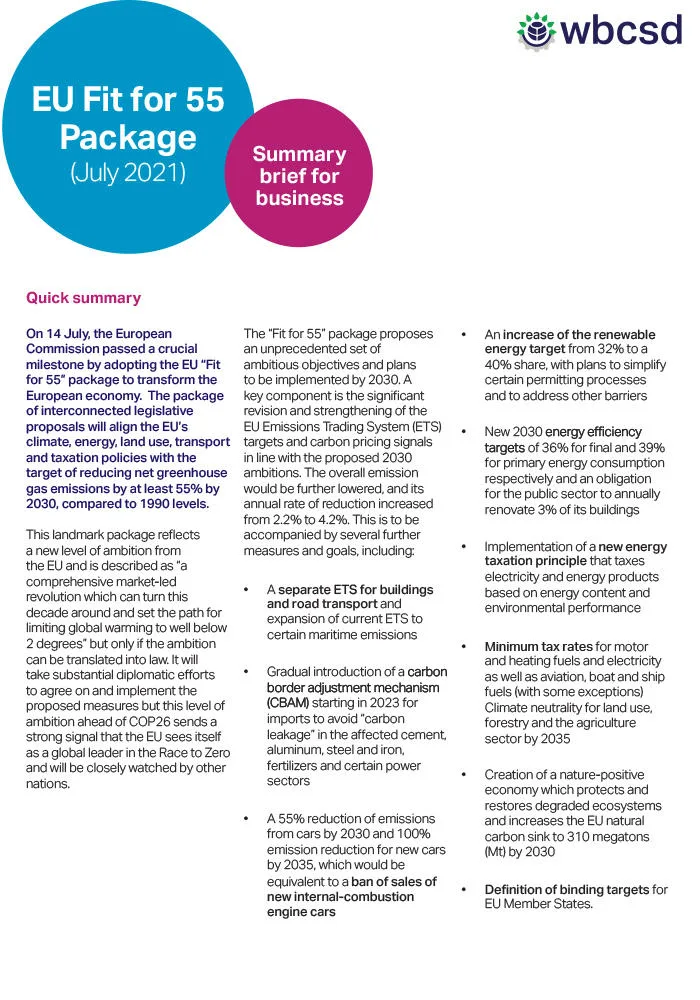WBCSD Business Summary

Published
23 July, 2021Type
PublicationOn 14 July, the European Commission passed a crucial milestone by adopting the EU “Fit for 55” package to transform the European economy. The package of interconnected legislative proposals will align the EU’s climate, energy, land use, transport and taxation policies with the target of reducing net greenhouse gas emissions by at least 55% by 2030, compared to 1990 levels. This landmark package reflects a new level of ambition from the EU and is described as “a comprehensive market-led revolution which can turn this decade around and set the path for limiting global warming to well below 2 degrees” but only if the ambition can be translated into law. It will take substantial diplomatic efforts to agree on and implement the proposed measures but this level of ambition ahead of COP26 sends a strong signal that the EU sees itself as a global leader in the Race to Zero and will be closely watched by other nations.
The “Fit for 55” package proposes an unprecedented set of ambitious objectives and plans to be implemented by 2030. A key component is the significant revision and strengthening of the EU Emissions Trading System (ETS) targets and carbon pricing signals in line with the proposed 2030 ambitions. The overall emission would be further lowered, and its annual rate of reduction increased from 2.2% to 4.2%. This is to be accompanied by several further measures and goals, including:
- A separate ETS for buildings and road transport and expansion of current ETS to certain maritime emissions
- Gradual introduction of a carbon border adjustment mechanism (CBAM) starting in 2023 for imports to avoid “carbon leakage” in the affected cement, aluminum, steel and iron, fertilizers and certain power sectors
- A 55% reduction of emissions from cars by 2030 and 100% emission reduction for new cars by 2035, which would be equivalent to a ban of sales of new internal-combustion engine cars
- An increase of the renewable energy target from 32% to a 40% share, with plans to simplify certain permitting processes and to address other barriers
- New 2030 energy efficiency targets of 36% for final and 39% for primary energy consumption respectively and an obligation for the public sector to annually renovate 3% of its buildings
- Implementation of a new energy taxation principle that taxes electricity and energy products based on energy content and environmental performance
- Minimum tax rates for motor and heating fuels and electricity as well as aviation, boat and ship fuels (with some exceptions)
- Climate neutrality for land use, forestry and the agriculture sector by 2035
- Creation of a nature-positive economy which protects and restores degraded ecosystems and increases the EU natural carbon sink to 310 megatons (Mt) by 2030
- Definition of binding targets for EU Member States.
For further information on our work on climate action and energy, kindly contact: Lucy Moran at lucy.moran@wbcsd.org
